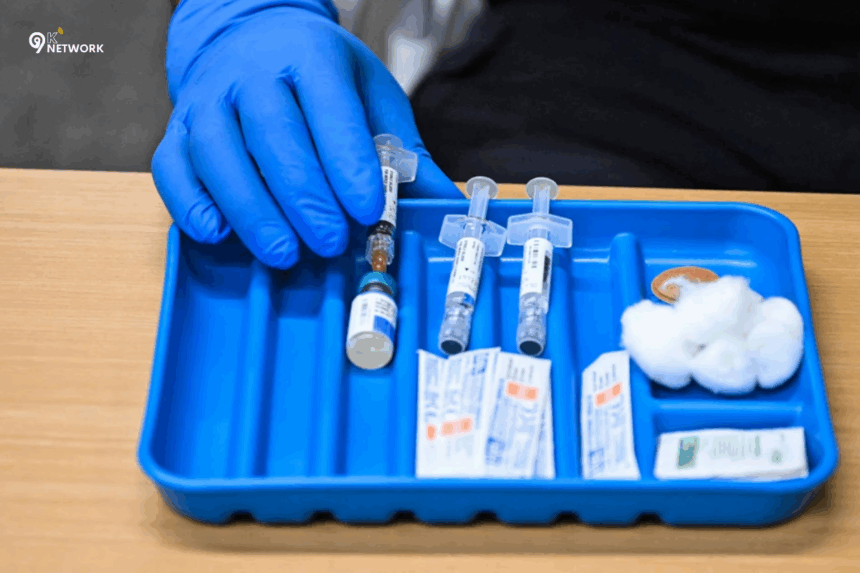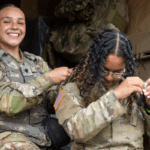Vaccines play a vital role in protecting children and communities from serious diseases. One such vaccine, the MMRV vaccine, has been the subject of growing discussion in both medical and public spaces. Recently, Kennedy’s advisory panel voted to limit the MMRV vaccine for children under 4, raising questions for parents and healthcare providers alike.
The Centers for Disease Control and Prevention (CDC) has long provided clear recommendations for vaccination schedules. With this new advisory vote, many are wondering: What exactly does this mean for families? Should parents be concerned? And how does MMRV differ from the standard MMR vaccine?
This article breaks down five key takeaways from the advisory panel’s decision, explores CDC recommendations, and answers common questions about the MMRV vaccine.
What is the MMRV Vaccine?
The MMRV vaccine is a combination vaccine that protects against four major childhood illnesses:
- Measles
- Mumps
- Rubella (German measles)
- Varicella (chickenpox)
It combines the MMR vaccine (measles, mumps, rubella) with the varicella vaccine into a single shot.
Is there an MMRV vaccine available?
Yes. The U.S. Food and Drug Administration (FDA) approved the MMRV vaccine under the brand name ProQuad. It has been available for several years as an alternative to receiving two separate injections (MMR + Varicella).
CDC Recommendations for the MMRV Vaccine
The CDC provides a detailed schedule for vaccines, including the MMRV.
- First dose: Recommended at 12–15 months of age.
- Second dose: Given at 4–6 years of age.
Should MMRV be used for the first dose?
The CDC currently advises that either:
- MMR + Varicella vaccines (two separate shots), or
- The combined MMRV vaccine (one shot),
can be used for the second dose. However, for the first dose (12–15 months), CDC guidance often leans toward separate injections, especially for children under 2 years, due to a slightly higher risk of febrile seizures when using MMRV.
MMR and Varicella Timing
A common question is: How far apart should MMR and varicella vaccines be given?
- If given separately, the MMR and Varicella vaccines can be administered on the same day.
- If not given on the same day, they should be spaced at least 28 days apart.
CDC Vaccine Schedule Table
| Vaccine Type | 1st Dose (12–15 months) | 2nd Dose (4–6 years) | Notes |
|---|---|---|---|
| MMR | ✔ | ✔ | Two doses required |
| Varicella | ✔ | ✔ | Two doses required |
| MMRV (combined) | Optional (higher seizure risk under age 2) | ✔ | May replace separate shots |
Kennedy’s Advisory Panel Decision – 5 Key Takeaways
1. Limiting Use for Children Under 4
The panel voted to restrict MMRV use in children under 4 years old, due to concerns over increased risks when compared with separate MMR + Varicella shots.
2. Safety and Side Effects Consideration
One of the biggest reasons for this decision is safety. Studies show that children between 12–23 months who receive MMRV are more likely to develop a febrile seizure within 5–12 days after vaccination compared to those who receive MMR and Varicella separately.
Common side effects of MMRV include:
- Mild rash
- Fever
- Swelling at injection site
- Seizures (rare, but more frequent than with separate doses)
3. Vaccine Effectiveness and Coverage
In terms of effectiveness, MMRV is as protective as giving MMR and Varicella separately. Both methods lead to strong immunity against the four diseases.
However, safety concerns tip the balance in favor of separate doses for younger children.
4. Public Health and Parental Concerns
Parents have expressed concerns about:
- The number of shots children receive
- Possible side effects of combination vaccines
- Trust in advisory panel decisions
Healthcare professionals also emphasize clear communication with parents so they can make informed decisions.
5. Next Steps in CDC Policy
Although Kennedy’s advisory panel issued a recommendation, it is ultimately up to the CDC and the Advisory Committee on Immunization Practices (ACIP) to finalize vaccination guidelines.
Parents should continue to follow current CDC recommendations while awaiting updates.
MMR vs. MMRV – Key Differences
| Feature | MMR Vaccine | MMRV Vaccine |
|---|---|---|
| Diseases Covered | Measles, Mumps, Rubella | Measles, Mumps, Rubella, Varicella |
| Number of Shots | 2 (plus 2 Varicella separately) | 2 (combined protection) |
| Side Effects | Mild fever, rash, soreness | Slightly higher risk of febrile seizures in toddlers |
| Age Use | 12–15 months, 4–6 years | CDC prefers for 2nd dose; limited for under 4 |
MMR Vaccine in Adults
While this discussion focuses on children, adults also sometimes need the MMR vaccine.
- Adults born after 1957 without evidence of immunity should receive at least one dose of MMR.
- Some adults (such as healthcare workers or international travelers) may need two doses.
FAQs – People Also Ask
1. What are the CDC recommendations for MMRV?
The CDC recommends either MMR + Varicella separately or MMRV combined for the second dose. For the first dose (12–15 months), separate MMR and Varicella shots are preferred to reduce seizure risk.
2. Is there a difference between MMR and MMRV?
Yes. MMR protects against measles, mumps, and rubella, while MMRV adds protection against varicella (chickenpox) in a single shot.
3. How far apart should MMR and varicella vaccines be given?
If not given on the same day, they should be administered at least 28 days apart.
4. What are the risks of combining MMR and chickenpox vaccines?
Combining them into MMRV increases the risk of febrile seizures in children under 2 years. Older children generally tolerate the combination well.
5. Do adults need an MMR vaccine?
Yes, adults without immunity (especially healthcare workers, college students, or travelers) should receive the MMR vaccine.
Final Thoughts
The MMRV vaccine CDC debate highlights the delicate balance between safety, effectiveness, and convenience in public health. Kennedy’s advisory panel decision to limit MMRV use in children under 4 reflects ongoing efforts to protect children from preventable diseases while minimizing risks.
For parents, the takeaway is clear:
- Follow CDC vaccination schedules
- Discuss options with your pediatrician
- Stay updated as new recommendations emerge
Vaccination remains one of the most powerful tools to ensure community health. By staying informed, parents and healthcare professionals can make the best choices for children’s safety and well-being.
🔗 Related Reading on 9knetwork: Stay updated with the latest health and vaccine news on 9knetwork.com.














